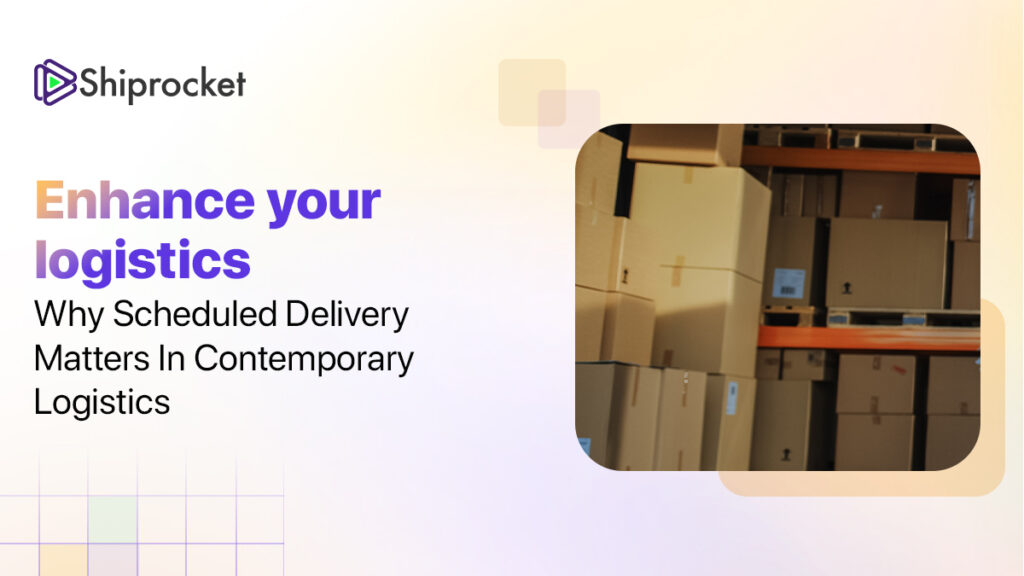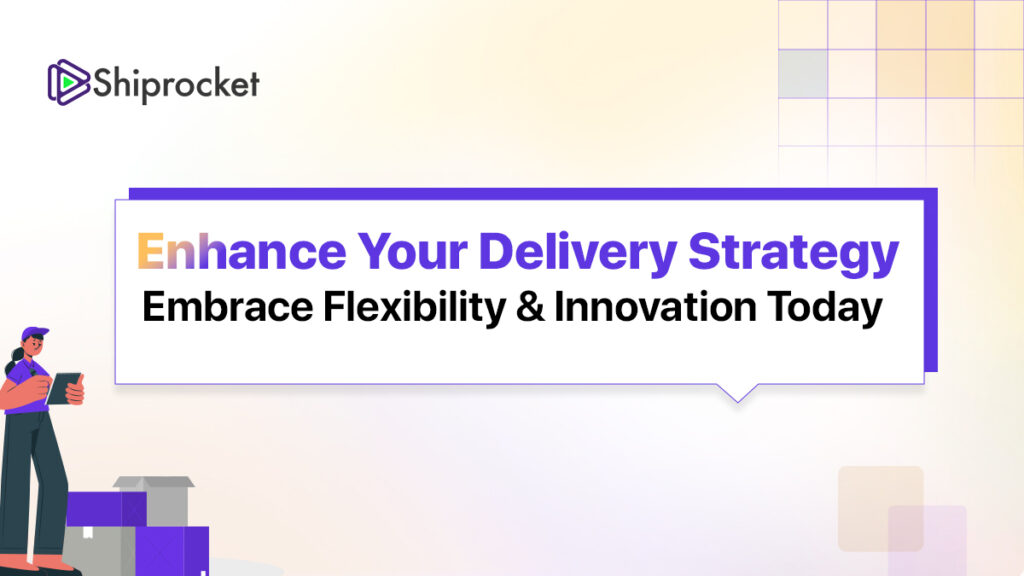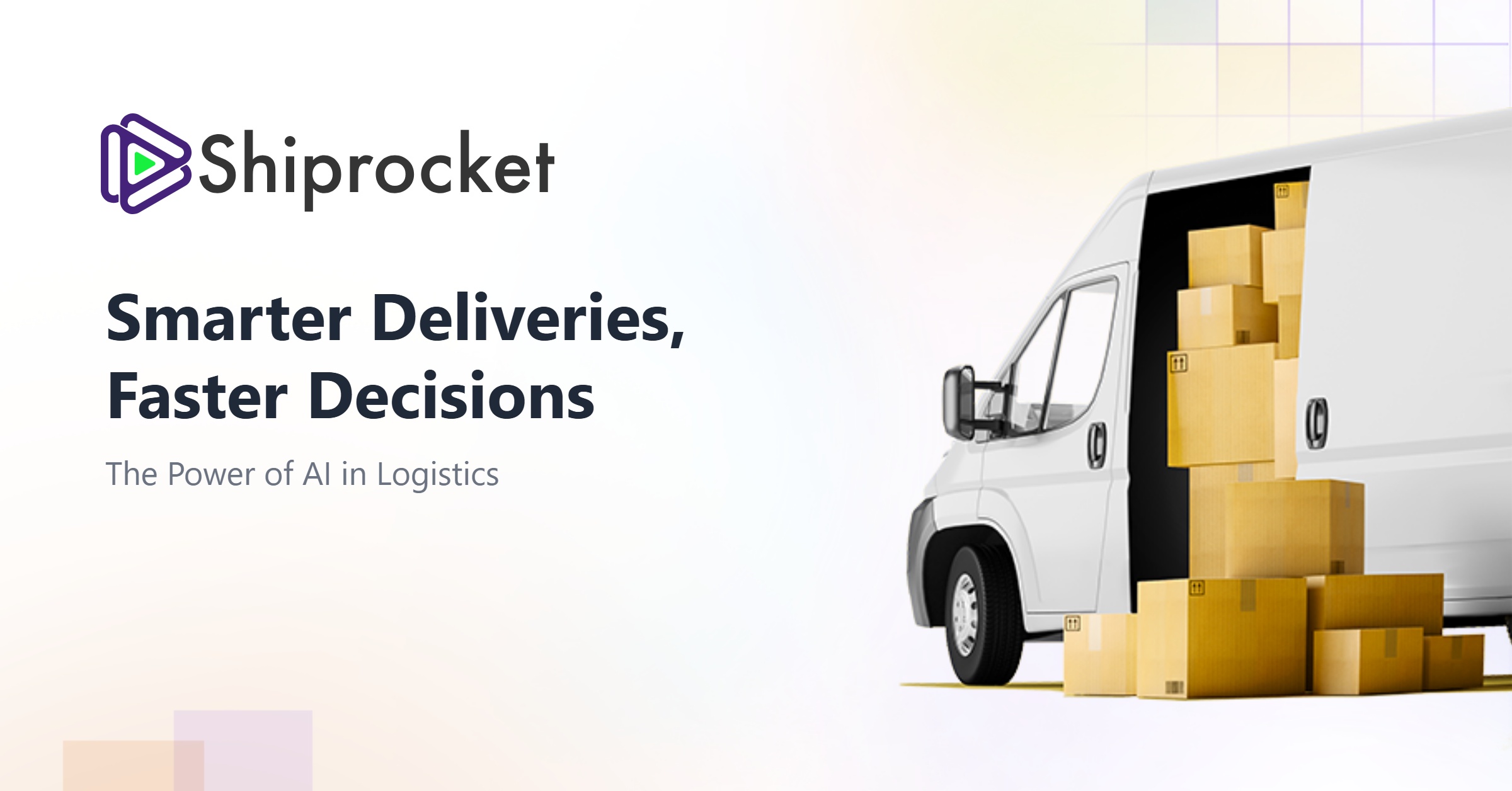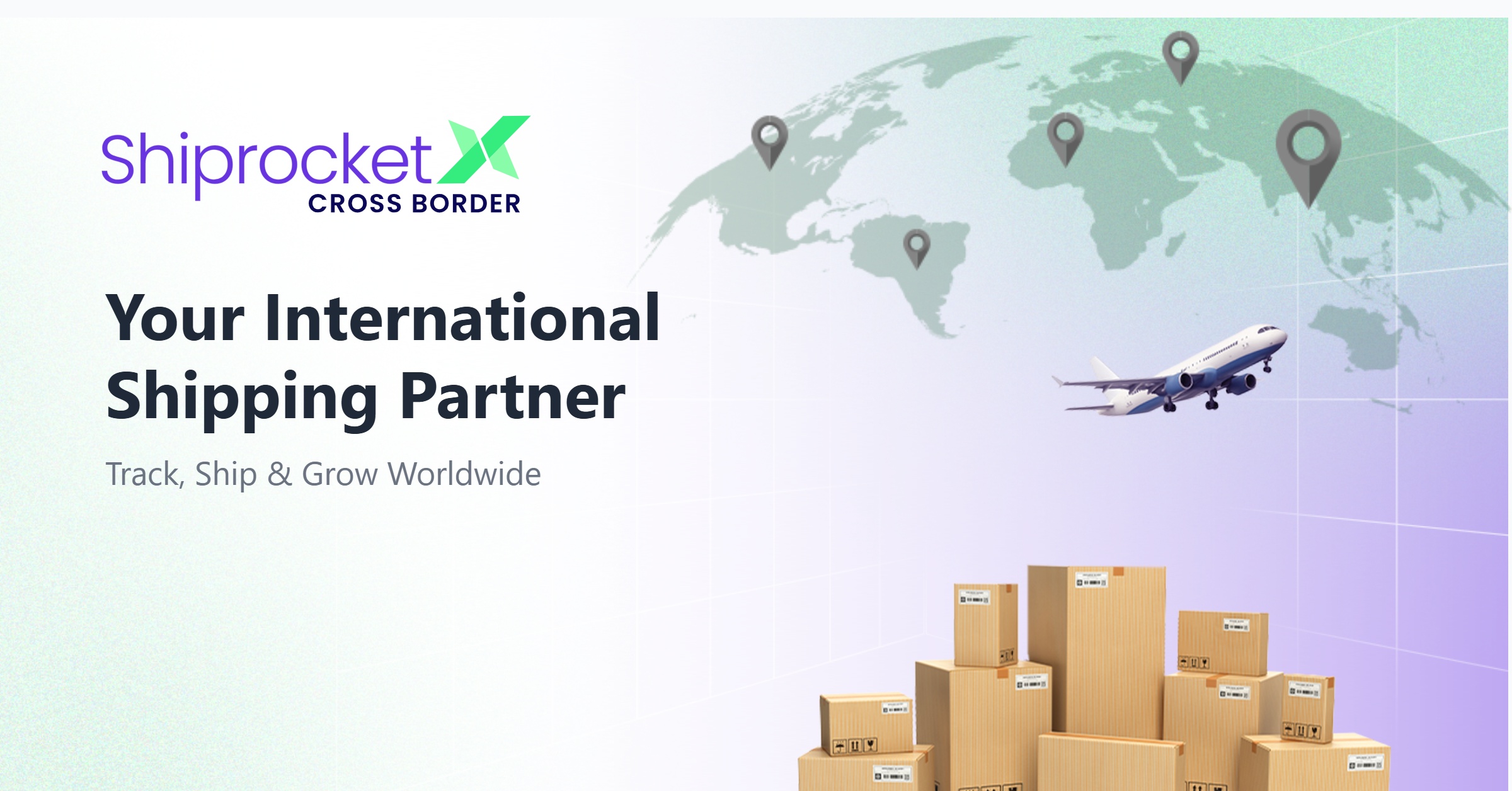How Scheduled Delivery Transforms Logistics Operations
- Scheduled Delivery: An Overview
- How Does Scheduled Delivery Work?
- Step-by-Step Process of Scheduled Delivery:
- Best Practices for Effective Scheduled Delivery
- Assessing the Accuracy of Estimated Delivery Dates in Scheduled Delivery
- Estimated vs. Actual Delivery Dates: The Differences
- Why Scheduled Delivery Continues to Be Popular?
- Comparing Scheduled Delivery with On-Demand Services
- Choosing Between On-Demand and Scheduled Delivery: What’s Best for You?
- Scheduled Delivery vs. Subscription Delivery: What’s the Difference?
- Choosing On-Demand or Subscription Delivery Over Scheduled Delivery: When It Makes Sense?
- The Importance of Integrating Scheduled Delivery into Your Business Model
- Challenges of Implementing Scheduled Delivery
- Advantages of Scheduled Delivery
- Features of the Technology Used in Enhancing Scheduled Delivery
- Expanding Your Delivery Strategies
- Enhancing Your Delivery Scheduling with Shiprocket Solutions
- Conclusion
In today’s fast-paced world, effective logistics is essential for business success. Companies continually seek ways to enhance their shipping processes and meet customer expectations. One approach that has gained significant attention is scheduled delivery. As businesses strive to optimise their operations and provide better service, understanding the role and benefits of scheduled delivery becomes increasingly important. Let’s explore why this method is key to modern logistics strategies.

Scheduled Delivery: An Overview
Scheduled delivery is a shipping method where businesses give customers a set time frame for receiving their orders. This approach is becoming popular in the eCommerce sector, where customer expectations are constantly changing. Scheduled delivery helps meet these expectations while improving how businesses manage their shipping process.
In simple terms, scheduled delivery means choosing a specific time or date for a shipment to arrive. Both the sender and recipient know when to expect the delivery, which allows them to plan ahead. This method is widely used in logistics and transportation to ensure timely deliveries. Scheduled delivery allows the sender, carrier, or recipient to select a delivery date within a fixed window. This flexibility makes the process more efficient and convenient for all involved.
How Does Scheduled Delivery Work?
Scheduled delivery operates through a well-organised process that ensures timely and convenient order delivery for businesses and customers. It involves careful planning around several factors, such as distance, traffic, and transportation options. This approach helps companies to run their operations smoothly while giving customers the convenience of knowing exactly when to expect their orders.
The process starts with coordination between the sender, the carrier, and the recipient. During checkout, customers are often given the option to select a delivery date that suits them from a range of available time slots. Once the customer chooses, the logistics provider organises the delivery to fit that schedule.
The delivery routes are optimised to ensure that packages arrive on time, considering factors like distance and traffic conditions. Sometimes, the shipper might specify a delivery date, or the carrier will choose the earliest available time based on their internal planning. Other times, the customer selects the delivery window when ordering.
Step-by-Step Process of Scheduled Delivery:
- Inventory Management and Order Monitoring: The first crucial step is keeping track of all incoming and outgoing orders. A real-time view of each order’s status allows businesses to anticipate potential issues and ensure smoother deliveries.
- Optimising Delivery Routes: Next, the delivery routes are carefully planned. Using technology to optimise routes helps identify the most efficient paths, ensuring drivers avoid unnecessary delays and travel the shortest distance between delivery points.
- Trip Scheduling and Resource Allocation: The final step involves organising the deliveries into trips. Each package is assigned to the right vehicle, considering factors like size and weight, and delivery drivers are given specific routes to ensure timely and accurate delivery.
Best Practices for Effective Scheduled Delivery
Implementing scheduled delivery effectively requires a strategic approach that balances customer satisfaction, operational efficiency, and cost management. Here’s how you can ensure your scheduled delivery process runs smoothly:
- Prioritise Transparent Communication: Keep customers informed about delivery times, changes, and delays. Use real-time tracking and status updates to set accurate expectations and build trust.
- Embrace Technology for Optimal Routing: Use route optimisation software to plan efficient delivery routes, reducing travel time and costs. This ensures reliable and cost-effective delivery schedules.
- Provide Timely Notifications: Update customers about delivery status through email, SMS, or app alerts. Timely notifications prevent misunderstandings and missed deliveries.
- Offer Robust Customer Support: To address delivery issues, offer multiple contact options like phone, email, and live chat. Ensure your customer service team is well-trained to resolve problems quickly.
Assessing the Accuracy of Estimated Delivery Dates in Scheduled Delivery
To estimate the delivery date accurately, use the following formula:
EDD = Order Processing Time + Maximum Transit Time
Here’s what each component involves:
- Order Processing Time: The time required to prepare the order for shipment, including tasks like picking, packing, and labelling.
- Maximum Transit Time: The longest time it takes for the shipment to reach its destination based on the chosen shipping method and distance.
Accurately calculating estimated delivery dates (EDD) is essential for ensuring customer satisfaction and maintaining smooth operations. Here’s a comprehensive guide to assessing and improving the accuracy of your EDD:
- Understand the Shipment Type: Different shipping methods affect delivery dates. Standard shipping takes longer compared to expedited shipping. International shipments face delays due to distance and customs. Knowing the shipping method helps set realistic delivery expectations.
- Monitor Your Inventory Levels: Inventory affects delivery dates. In-stock items lead to quicker delivery, while out-of-stock items cause delays. Keep your inventory updated to provide accurate delivery estimates and avoid delays.
- Evaluate Carrier Performance: Carrier efficiency impacts delivery times. A carrier with slow processing or inefficient operations results in longer delivery times. Choose a carrier with proven efficiency to speed up delivery.
- Consider the Delivery Destination: Delivery locations affect timing. Nearby destinations generally receive orders faster than remote areas. Consider local regulations and restrictions when estimating delivery dates.
- Factor in Order Processing Time: Processing time, including picking and packing, impacts delivery estimates. Automated systems speed up processing, while manual handling extends it. Account for processing time in your delivery expectations.
- Account for Seasonal and External Factors: Seasonal conditions and external factors like weather or political issues can delay deliveries. Include these factors in your estimates to ensure accuracy.
- Use Real-Time Data and Integration: Integrate with carriers for real-time data on shipping rates and delivery estimates. Tools that provide current data improve delivery date accuracy.
- Implement a Buffer for Uncertainties: Include a buffer in delivery estimates to handle unexpected delays. This helps manage issues like order surges and avoids overpromising.
- Continuously Review and Adjust: Regularly compare estimated and actual delivery times. Use this feedback to refine your estimates and improve accuracy.
Estimated vs. Actual Delivery Dates: The Differences
When it comes to deliveries, understanding the difference between estimated and actual delivery dates is crucial for both businesses and customers. Though these terms may sound similar, they refer to distinct aspects of the delivery process.
| Aspect | Estimated Delivery Date (EDD) | Actual Delivery Date |
|---|---|---|
| Definition | Customers are provided with an approximate timeframe indicating when their package is expected to arrive. | The specific date on which the package is successfully delivered to the recipient. |
| Calculation Factors | Shipment type (e.g., standard, expedited) – Carrier performance – External factors (e.g., weather, traffic) – Delivery destination | Order processing time – Inventory levels – Shipping method and carrier efficiency |
| Influencing Factors | Distance – Carrier capabilities – Sender’s processing time | Inventory availability – Time taken for order preparation and dispatch |
| Impact of Delays | Changes may occur due to delivery exceptions, such as weather emergencies or other disruptions. Customers may receive updated estimates or a “delivery pending” message. | Represents the actual completion of the delivery. Any delays in shipping or unforeseen issues will be reflected here. |
| Purpose | Sets customer expectations and provides an estimated timeframe for package arrival. | Confirm the exact date when the package reaches the customer. |
| Adjustments | It can be adjusted based on unforeseen delays or changes in circumstances. | The final date is based on the package’s real-time delivery. |
Why Scheduled Delivery Continues to Be Popular?
Scheduled delivery is valued for balancing convenience, cost-effectiveness, and operational efficiency. Scheduled delivery, also known as planned delivery, remains a popular shipping option for several reasons:
- Convenience for All Parties: It allows shippers, carriers, and customers to select a delivery time that suits their schedules. This mutual flexibility ensures that the delivery process aligns with everyone’s needs.
- Cost Savings: Scheduled delivery is often more economical than on-demand or same-day delivery. It enables better route planning and vehicle utilisation, which helps reduce delivery costs.
- Operational Efficiency: For carriers and shippers, scheduled delivery provides the benefit of planning routes in advance and optimally filling delivery vehicles. This can lead to more efficient operations and fewer trips, saving time and resources.
Comparing Scheduled Delivery with On-Demand Services
Scheduled delivery and on-demand delivery are two distinct methods of shipping, each offering unique advantages depending on the needs of customers and businesses.
| Feature | Scheduled Delivery | On-Demand Delivery |
|---|---|---|
| Delivery Timing | Pre-planned, set for a specific date and time chosen by the customer. | Immediate, often within minutes to a few hours after the order is placed. |
| Origin of Shipment | Usually from larger warehouses or distribution centers. | Typically, from local stores or dark stores for faster fulfillment. |
| Fleet Efficiency | Optimised routes for efficient vehicle use and fewer trips. | Fleet efficiency may suffer during peak hours due to the fast nature of service. |
| Customer Convenience | Customers can schedule a delivery time that fits their availability. | Prioritises speed to meet urgent customer demands. |
| Use Cases | Ideal for routine shipments with flexible time windows. | Used for urgent deliveries like groceries, food, or last-minute orders. |
| Tracking | Offers real-time tracking of delivery progress from dispatch to arrival. | Also provides real-time tracking but focuses on rapid delivery updates. |
| Flexibility | Less flexible for immediate or same-day delivery needs. | Highly flexible, catering to on-the-spot delivery demands. |
| Fleet Utilisation | Efficient use of vehicles and resources through planned routes. | This may lead to underutilised fleets due to the immediate delivery requirement. |
| Potential Disadvantage | It may not cater to urgent needs due to fixed delivery windows. | It can be more costly and resource-heavy, especially during peak demand. |
Choosing Between On-Demand and Scheduled Delivery: What’s Best for You?
When deciding between on-demand and scheduled delivery, weighing the pros and cons of both options is essential based on your needs and priorities. Here’s a guide to help you choose what works best for your business or personal needs:
| On-Demand Delivery | Scheduled Delivery |
|---|---|
| Delivers items quickly, typically within minutes or hours. | Allows for planned deliveries with advanced notice. |
| More expensive due to the immediate nature of the service. | Usually more affordable, thanks to route optimisation. |
| Highly flexible and can adjust in real-time. | Offers limited flexibility due to pre-set schedules. |
| Ideal for customers needing instant service, like urgent parcels or food. | Provides customers with a specific delivery window. |
| Fleet efficiency may be lower during peak times. | Ensures better fleet utilisation with optimised routes. |
| Perfect for businesses with quick turnaround needs, such as food delivery. | Ideal for businesses handling bulk or routine deliveries. |
| Deliveries are fulfilled from nearby stores or centers for speed. | Shipments often come from larger warehouses or distribution centers. |
| Offers real-time tracking with a quick delivery window. | Provides tracking but with a more predictable schedule. |
| May face delays during high demand, reducing reliability. | More reliable due to planned, predictable schedules. |
| This can lead to higher emissions due to frequent, immediate deliveries. | Lower environmental impact through consolidated routes. |
| Handles single, urgent deliveries. | Suitable for bulk or larger deliveries over longer periods. |
| Best for urgent services like food delivery or immediate parcels. | Best for bulk shipments, large items, or routine deliveries. |
Scheduled Delivery vs. Subscription Delivery: What’s the Difference?
Here is what you need to know about scheduled and subscription delivery:
| Aspect | Scheduled Delivery | Subscription Delivery |
|---|---|---|
| Definition | Delivery is set for a specific date and time chosen by the customer. | Recurring deliveries of products based on a subscription plan. |
| Best For | One-time or large purchases requiring planned delivery times. | Regular purchases, like groceries or household items, are delivered at set intervals. |
| Flexibility | Offers flexibility in choosing a convenient delivery time. | A predictable delivery schedule is based on the subscription plan. |
| Frequency | One-time or occasional deliveries. | Recurring deliveries (weekly, monthly, etc.). |
| Customer Control | Customers pick the exact delivery date and time. | Customers have limited control over specific delivery times but can choose delivery frequency. |
| Cost | Typically lower than on-demand but can vary depending on the provider. | Often comes with a discount for bulk or recurring orders. |
| Use Cases | Ideal for large items like furniture appliances or planned deliveries for events. | Ideal for consumable items like groceries, pet food, or vitamins. |
| Delivery Time | Specific to the chosen date and time. | Set intervals, often with a set week or month delivery day. |
| Route Optimisation | Routes are optimised to fit multiple deliveries within the time window. | Pre-planned routes based on regular delivery schedules. |
Choosing On-Demand or Subscription Delivery Over Scheduled Delivery: When It Makes Sense?
When to choose each delivery option:
On-Demand Delivery:
- Urgency: Choose when you need items delivered within hours or minutes.
- Type of Need: Best for immediate needs or high-priority items.
- Flexibility: Ideal when flexibility and fast response are essential.
- Cost Consideration: Suitable if you pay a premium for rapid delivery.
Subscription Delivery:
- Urgency: Opt for this when you require regular, predictable deliveries.
- Type of Need: Ideal for regularly consumed products, like groceries.
- Flexibility: When routine and consistency are important.
- Cost Consideration: Choose if you are interested in cost savings from bulk or regular orders.
Scheduled Delivery:
- Urgency: Select this option for a specific delivery date and time for planned needs.
- Type of Need: Best for one-time purchases, large items, or event-related deliveries.
- Flexibility: Suitable when planning in advance and choosing a precise delivery window.
- Cost Consideration: Preferable for a more cost-effective option compared to on-demand.
The Importance of Integrating Scheduled Delivery into Your Business Model
Integrating scheduled delivery into your business model can offer a range of significant benefits:
- Enhance Customer Satisfaction and Loyalty: Scheduled delivery allows customers to choose delivery times that fit their schedules. This convenience leads to a more positive customer experience, fostering loyalty and encouraging repeat business.
- Improve Operational Efficiency: Businesses can optimise routes and allocate resources more effectively by planning delivery schedules. This reduces operational costs and streamlines logistics, making your business more efficient.
- Reduce Delivery Challenges: Scheduled delivery helps minimise issues such as missed deliveries and the need for rescheduling. This leads to fewer customer complaints and smoother operations, enhancing overall service quality.
- Gain a Competitive Advantage: Offering scheduled delivery sets you apart from competitors by meeting customer demands for flexibility and convenience. This can attract customers looking for personalised service, giving your business a distinct edge.
- Expand Your Customer Base: Providing flexible delivery options appeals to a broader audience prioritising convenience. This can help you reach new customer segments and grow your business.
Challenges of Implementing Scheduled Delivery
Implementing a scheduled delivery system can bring various challenges that businesses must address to ensure effectiveness. Here’s a look at some common issues and how they can impact your operations:
- Complex Coordination: Managing delivery schedules across various locations, carriers, and customer preferences requires careful planning. Mismanagement can lead to delays and missed deliveries.
- Capacity Management: Efficiently using resources while handling numerous scheduled deliveries can be demanding. Businesses must optimise routes and manage inventory to avoid overload.
- Handling Last-Minute Changes: Adapting to customer requests for schedule changes, such as address updates or expedited shipping, requires flexibility and quick adjustments without disrupting the overall schedule.
- Accurate Communication: Providing clear and timely updates about delivery status, changes, or delays is crucial. Inaccurate communication can lead to customer frustration and loss of trust.
- Meeting Customer Expectations: Ensuring deliveries meet customer demands for speed and convenience is challenging. Failure to meet expectations can result in negative reviews and loss of customers.
Advantages of Scheduled Delivery
Here are some advantages of scheduled delivery for your business:
- Enhanced Customer Satisfaction: Customers can choose a delivery window that suits their schedule, improving their overall experience and increasing loyalty.
- Reduced Missed Deliveries: Scheduling helps prevent missed deliveries by allowing customers to plan their arrival, reducing the need for rescheduling.
- Improved Operational Efficiency: Businesses can optimise routes and resource allocation, increasing productivity and lower operational costs.
- Better Resource Utilisation: Scheduled delivery allows for efficient resource use, helping manage fleet capacity and reduce costs.
- Minimised Theft and Damage: When customers are present for delivery, the risk of theft and damage is reduced, ensuring packages arrive safely.
- Cost-Effectiveness: Scheduled delivery is generally more cost-effective than on-demand options, helping businesses manage shipping expenses while meeting customer needs.
- Streamlined Delivery Process: Effective planning reduces inefficiencies, ensuring timely deliveries, better vehicle capacity utilisation, and lower transportation costs.
Features of the Technology Used in Enhancing Scheduled Delivery
These are some of the features of technology used in scheduled delivery:
- Real-Time Tracking: Technology provides live updates on the delivery status, allowing customers to monitor their shipment’s journey in real-time and estimate its arrival more accurately.
- Route Optimisation: Advanced algorithms calculate the most efficient delivery routes, considering traffic, weather, and road conditions. This minimises delays and reduces fuel consumption.
- Automated Scheduling: Automated systems manage and coordinate delivery schedules, adjusting real-time changes and ensuring delivery windows are met effectively.
- Dynamic Delivery Windows: Technology allows flexible delivery time slots, allowing customers to choose or adjust their preferred delivery window based on convenience.
- Enhanced Communication: Integrated systems send automated notifications and updates to customers, informing them about their delivery status, estimated arrival times, and any changes.
- Data Analytics: Analytics tools track delivery performance, analyse customer preferences, and optimise schedules based on historical data. This helps in making informed decisions and improving service.
- Integration with Carrier Systems: Seamless integration with carrier APIs enables real-time updates and accurate delivery estimates, ensuring consistent and reliable service.
- Automated Inventory Management: Technology helps manage inventory levels efficiently, reducing the risk of stockouts and ensuring that items are available for scheduled delivery.

Expanding Your Delivery Strategies
To improve and expand your delivery strategies, follow these strategies:
- Use Advanced Technology: Invest in good software for managing deliveries. It helps plan routes, schedule, and track deliveries in real-time.
- Communicate Clearly: Stay in touch with your customers and give them clear and timely updates about their delivery status.
- Offer Flexible Delivery Times: Let customers choose from various delivery time slots. This makes them happier and more likely to be satisfied.
- Allocate Resources Efficiently: Plan how to use your delivery staff and vehicles wisely. Use data to make sure they are used effectively.
- Keep Improving: Regularly check the data and listen to customer feedback. Use this information to make your delivery process better.
- Optimise Your Routes: Use tools to plan the best delivery routes. This helps save time and reduces unnecessary driving.
- Use a Delivery App: Provide your drivers with a mobile app for deliveries. It should offer real-time updates and details about each delivery.
- Track Your Vehicles: Monitor where your vehicles are at all times. This helps adjust routes and keep track of delivery progress.
Enhancing Your Delivery Scheduling with Shiprocket Solutions
To streamline your shipping process and enhance your online journey, using Shiprocket can make a big difference. Shiprocket offers easy ways to manage and track deliveries, helping you provide a better experience for your customers. You can handle domestic, B2B, and hyperlocal deliveries all in one place. The platform also supports international shipping to over 220 international destinations.
With Shiprocket, you can enjoy faster shipping, improved efficiency, and better resource management. Plus, you can use their tools to optimise routes, track shipments in real-time, and integrate with your existing systems. This can help you reduce costs and increase customer satisfaction, making your delivery process smoother and more effective.
Conclusion
In today’s fast-paced world, scheduled delivery has become an essential aspect of modern logistics. It involves planning and committing to specific delivery windows in advance, offering customers greater flexibility and convenience. This approach contrasts with traditional methods, often lacking predictability and leading to delays. Scheduled delivery significantly improves customer satisfaction, optimises operational efficiency, and enhances resource management. As businesses adapt to the increasing demands for reliable and timely service, scheduled delivery helps them stay competitive and meet their customers’ evolving expectations.







